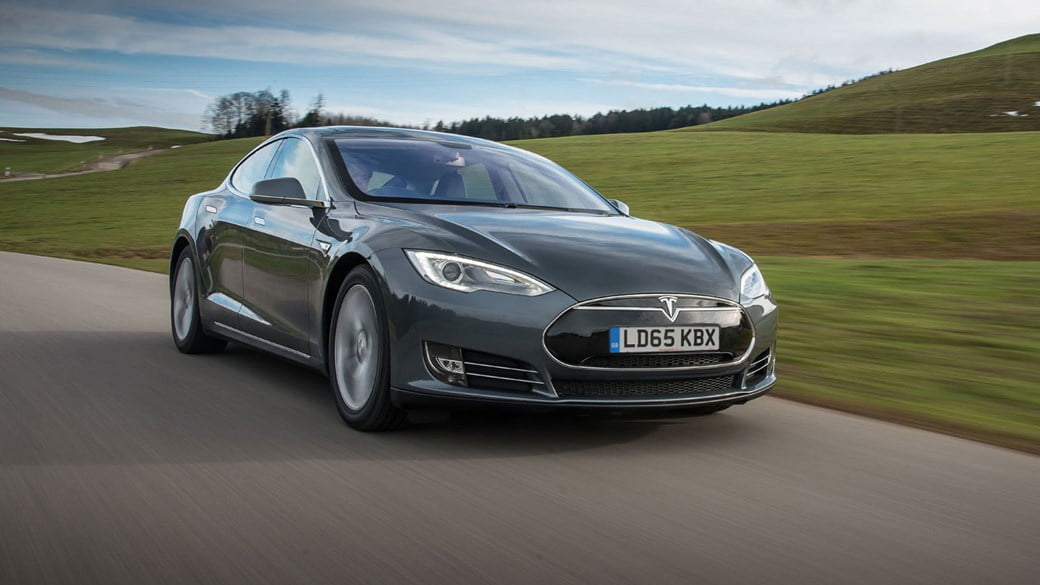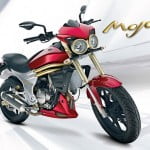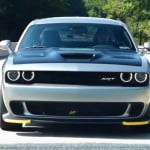
Such is the pace of change in Silicon Valley that it’s hard to keep up with the Tesla Model S. Not just in a straight line (even this ‘entry-level’ model will sprint past 60mph in 5.2sec) and in the fast-changing electronics and user interfaces onboard (now updated every few months, wirelessly) – but also in the evolution of the model range itself.
The versions offered are constantly being rejigged and 2013’s entry-level model, the 60, has now been usurped in the UK by this, the new 70D. It’s the cheapest way to join the Tesla Motors club today, with a sticker price of £57,335 in the UK, or £61,535 when tested thus in 4wd format.
Tesla 70D specs
Company founder Elon Musk names his cars after their battery capacity: so this electric car features a 70kWh lithium-ion battery. And the ‘D’? That means Dual Motor, signalling it’s four-wheel drive with a powerful 259bhp e-motor on each axle for a surprising punch of acceleration.
It’s a big car, at near-as-dammit 5m long, 1963mm wide and 1435mm tall. No wonder there’s huge space front and back; just watch out for pinched headroom in the rear seats if you spec the sweeping panoramic sunroof. With no propshaft required, there is a totally flat floor though. The boot’s a good size, although the ‘frunk’ under the bonnet is surprisingly smaller than a 911’s.
What’ll she do, mister?
This car is quick, with a capital F. Tesla quotes a chunky 387lb ft of torque, pulling the four-door towards the horizon with all the inevitability of a silent, slightly eerie electric catapult. Equipped with 4wd, it’s all drama-free and you’ll pass 60mph in 5.2sec – enough to see off most hot hatches – and on to a 140mph top speed.
Of course, most Model S drivers wouldn’t condone such flat-footed antics. Not least because the claimed 240-mile range will freefall southwards if you drive like a hooligan. Much better to ease off and surf the torque, preserving every precious mile. Driven like this, the indicated range is remarkably trustworthy and accurate in our experience.
This is the car’s natural milieu, a not-hanging-around waft, planning ahead, preserving energy, marvelling at how regenerative braking means you simply coast to slow down while topping up the range-ometer. All the while steering and handling, stopping and going in a fashion that no recent start-up has any right to accomplish. You’re aware of the two-tonne heft, but it doesn’t feel far from the class leaders in fun response. Praise indeed.
Tesla’s v7 software
This car also ushered in our first chance to test Tesla’s latest operating system, accessed through that vast, striking 17-inch touchscreen that dominates the dashboard. It brings a tidier user interface (those graphics are distinctly Apple-esque and a beacon of clarity) and niceties such asAuto Pilot.
Thought autonomous driving was a few years off? Think again. The Model S will follow the car in front, steer automatically on motorways and – get this – change lane automatically for you when you signal, if the coast is deemed clear. It’s a freakishly clever system that works most of the time; in heavy rain we found ourselves grateful it erred on the side of caution, however.
Click here to read our full road test of Auto Pilot in CAR+.
Verdict
The Model S continues to stun CAR’s testers. From its sophisticated design and fabulous interior to its incisive driving manner, it’s an incredibly well resolved four-door. That it then ladles on an engaging layer of Californian cleverness is what gives the Tesla its stand-out-from-the-crowd USP.
It’s still a frankly astonishing achievement that little ol’ Tesla has pioneered to the extent that the ancien régime are now playing catch-up. Yes, there are still shortcomings with owning an electric car, but the Tesla’s 200+ mile range, batteries warranted for eight years/unlimited miles and fast-charge ability allay many users’ fears. We can see why you’re beginning to see Model S electric limos in numbers in certain parts of London. It’s that good.
[“source-carmagazine”]





